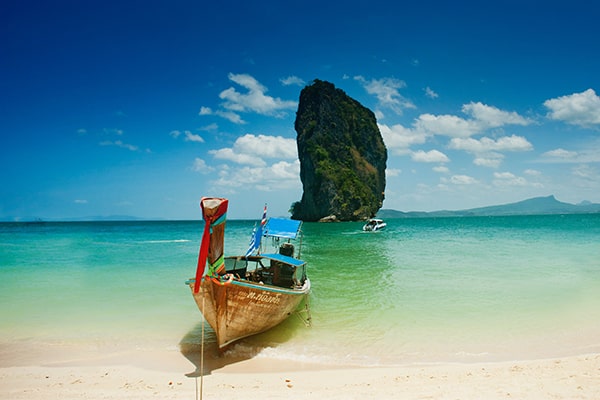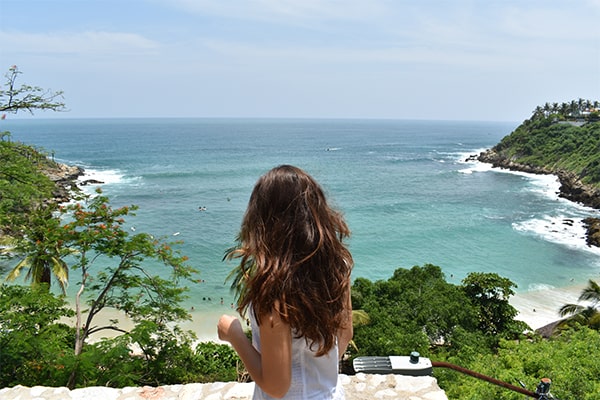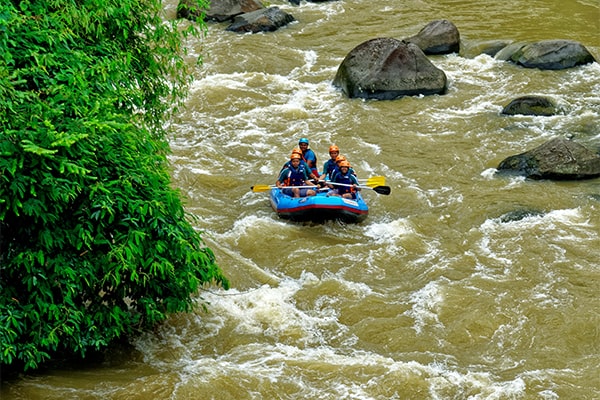.webp)
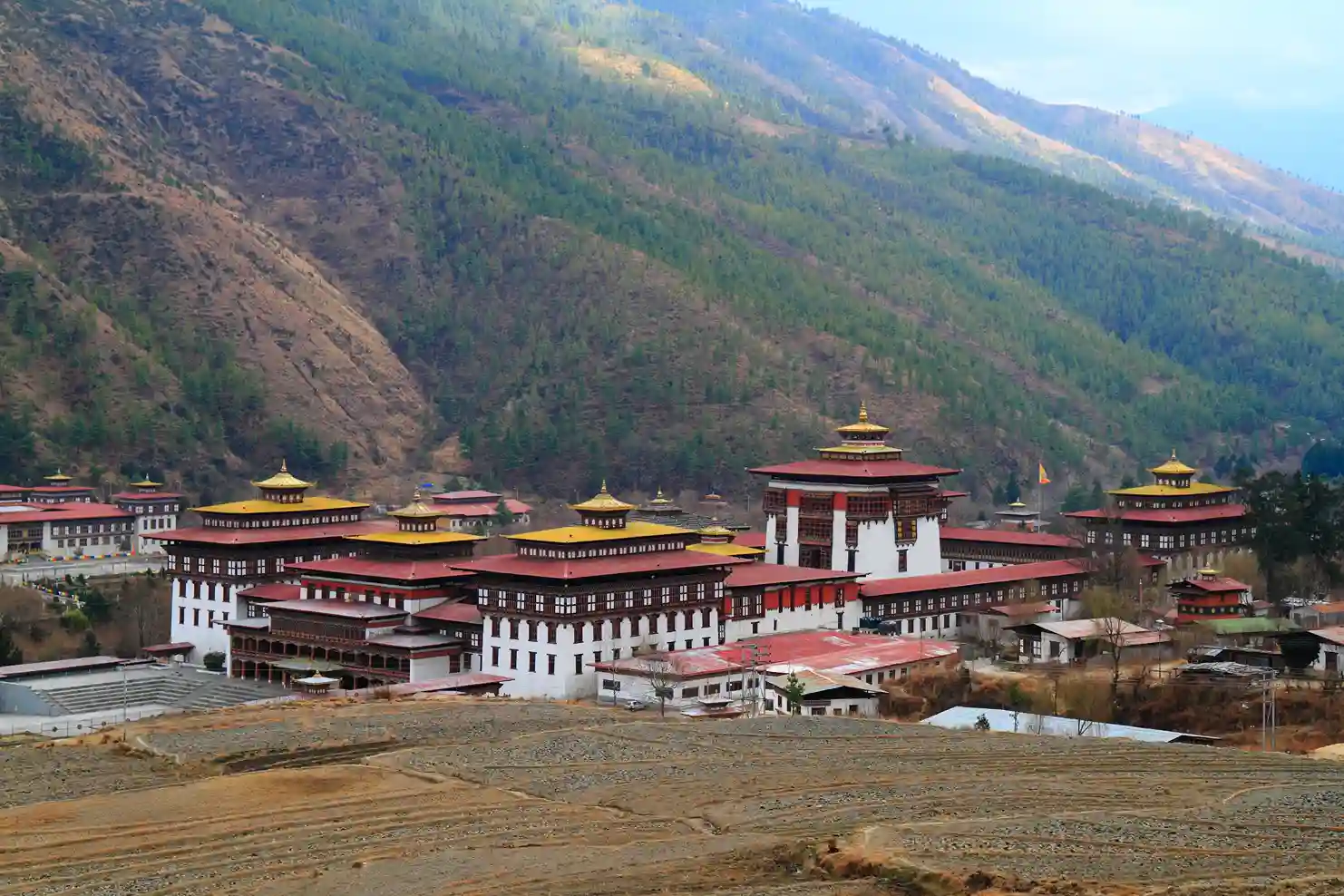
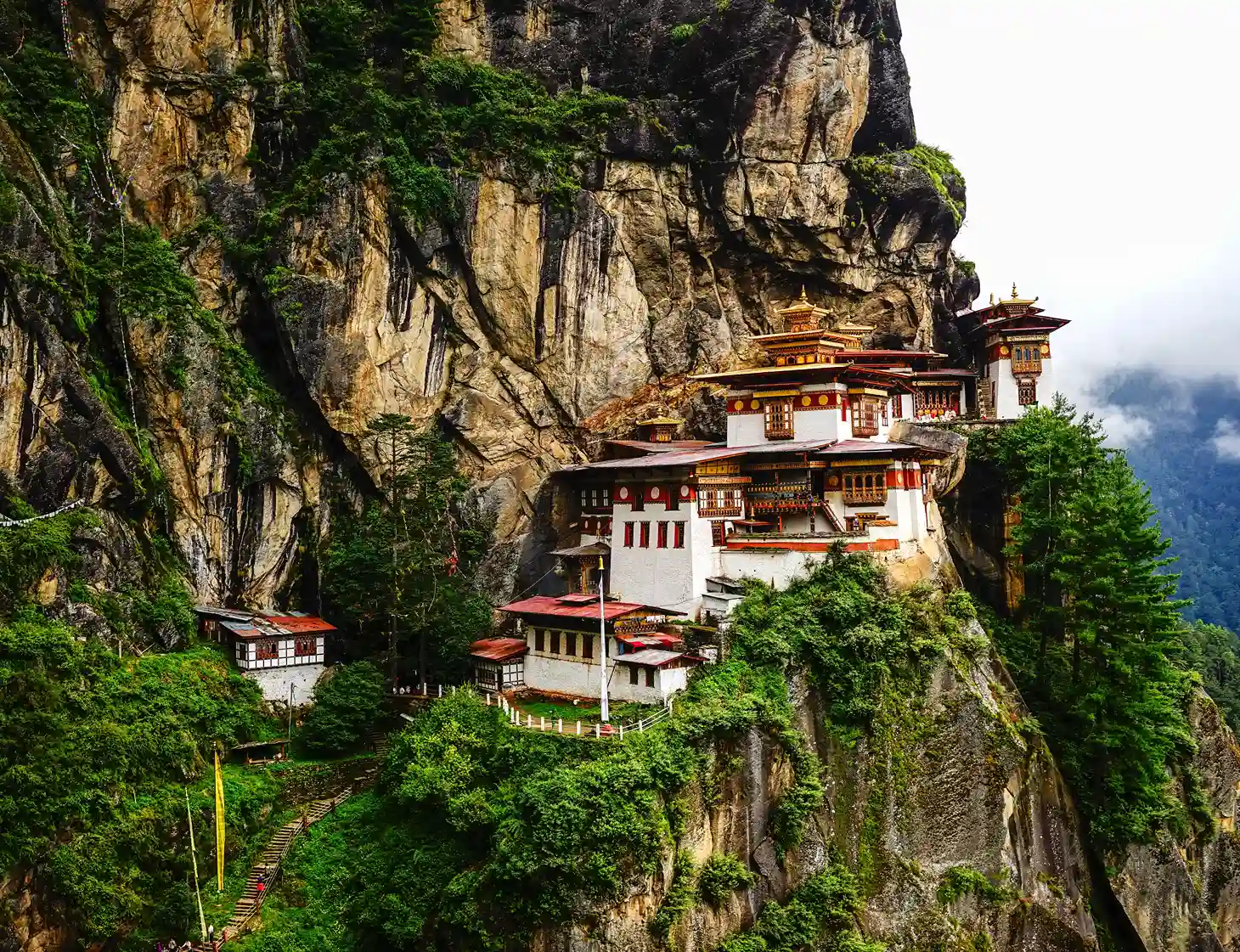
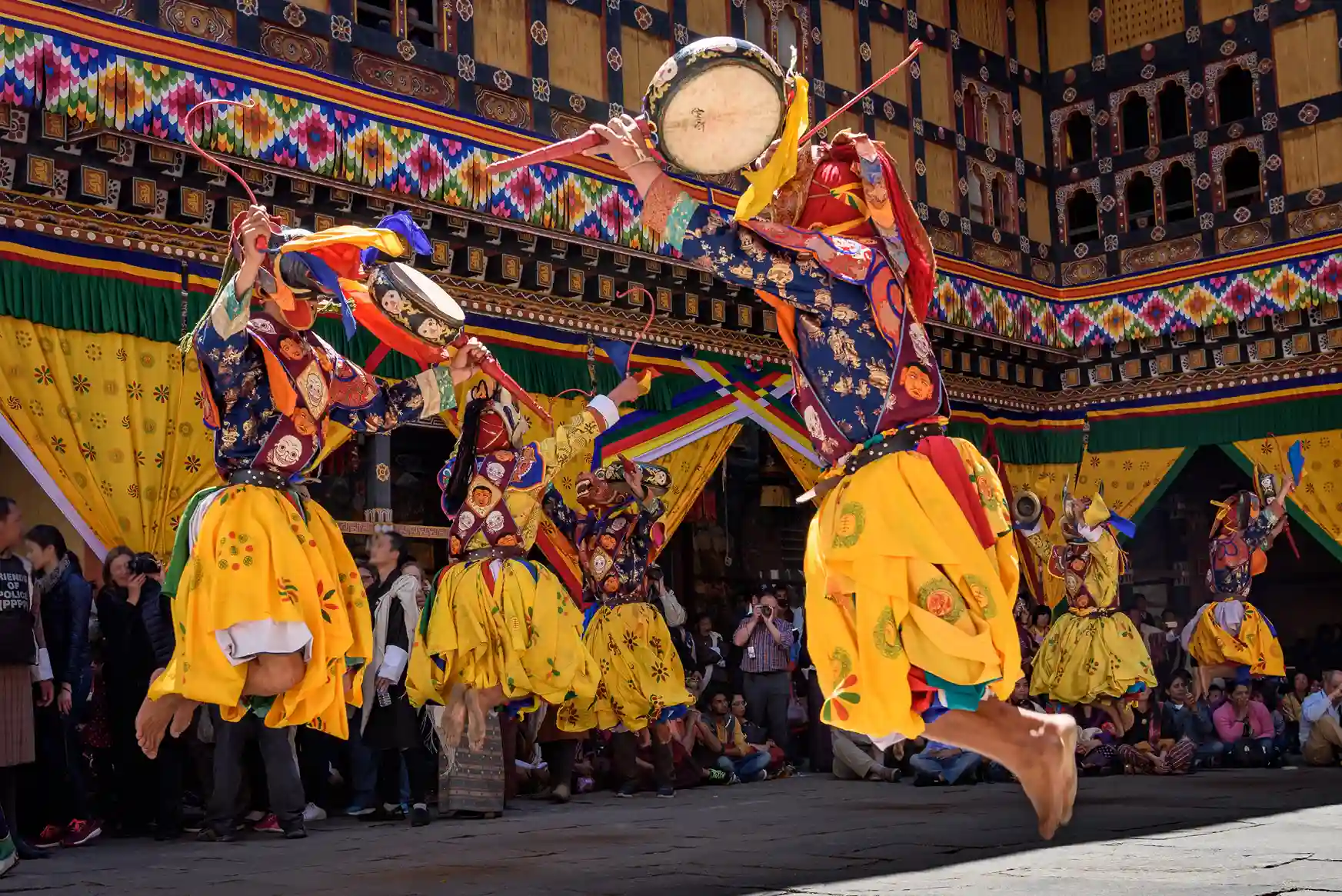

Bhutan Tour
4N / 5D Transfer Hotels Sightseeing
Meals
Bhutan is rightly known to the world today as the Last Shangri-La. It was the mighty Himalayas that protected Bhutan from the rest of the world and left this Himalayan jewel blissfully untouched. The Drukpa Kagyupa sect of Mahayana Buddhism provided the essence of a rich culture and fascinating history. The Bhutanese people protected this sacred heritage and unique identity for centuries by choosing to remain in a jealously guarded isolation. This country of rolling hills and towering crags certainly exudes charm. The mountains are magnificent, the forests are dense, the people are delightful, the air is pure, the architecture inspiring, the religion exciting and the art superb. Like timeless images from the past, the traveller encounters the full glory of this ancient land through its strategic fortresses known as Dzongs, numerous ancient temples, monasteries and stupas which dot the countryside, prayer flags which flutter along the high ridges, wild animals which abound in dense forests, foamy white waterfalls which are the ethereal showers, and the warm smile of its friendly people. With its beautiful and largely unspoiled Himalayan setting, its rich flora and fauna and its vibrant Buddhist culture, Bhutan has become an increasingly popular destination for international tourists.
- Accommodation in standard hotels, approved by Tourism Council of Bhutan
- All meals mention in proggram.
- All transfers and sightseeing’s as per the itinerary
- English speaking accompanying guide
- Sustainable Development Fee & Taxes
- Entrances (As per the itinerary)
- Bhutan Visa Fees (US$ 40/- per person)
- Expenses of personal nature
- Insurance of any kind / medical expenses
- Beverages (alcoholic / non – alcoholic)
- Expenses of personal nature (like tipping, laundry, Telephone/fax calls, camera/video fees etc.)
- Airfares and Airport Taxes
Day 1
Arrive Paro & transfer to Thimphu (55km/2Hrs)
The flight to Paro is one of the most spectacular in entire
Himalayas. Flying along the Himalayan range from Kathmandu, the journey offers
fascinating views and an exciting descent into the Kingdom. Bhutan’s first gift
to you as you disembark from the aircraft will be cool, clean fresh mountain
air. After immigration formalities and baggage collection, you will be met by
our representative, and afterwards drive to Thimphu, the capital town of Bhutan with enroute stop at Chuzom,
the confluence of Thimphu and Paro rivers. Three different styles of stupas;
Tibetan, Nepalese and Bhutanese adorn this confluence.
On arrival in Thimphu, check-into the hotel.
The capital town of Bhutan and the centre of
government, religion and commerce, Thimphu is a unique city with unusual
mixture of modern development alongside ancient traditions. Although not what
one expects from a capital city, Thimphu is still a fitting and lively place.
Home to civil servants, expatriates and monk body, Thimphu maintains a strong
national character in its architectural style.
In
the evening visit King's Memorial
Chorten continuously circum-ambulated by people, murmuring mantras, and
spinning their prayer wheels. Construction of this landmark was the idea of
Bhutan’s third king, His Majesty Jigme Dorji Wangchuk (“the father of modern
Bhutan”) who has wished to erect monument to world peace and prosperity.
Completed in 1974 after his untimely death, it serves both as a memorial to the
Late King and as a monument to peace.
Before returning to the hotel, take leisurely walk
to local craft Bazar recently
established under patronage of Department of cottage & small industry and
in collaboration with the department of culture, tourism council and the
department of agriculture marketing and cooperatives. This market offers
genuine Bhutanese arts & crafts thus contributing to promotion, protection,
and preservation of traditional arts.
Dinner and overnight at the Hotel in Thimphu (Altitude
2400m).
Day 2
Thimphu Sightseeing
Morning
after breakfast, take a short drive to the north of town to Buddha Dordenma, located atop a
hill in Kuenselphodrang Nature Park. The statue fulfils an ancient prophecy
dating back to the 8th century A.D that was discovered by Terton Pema Lingpa
(Religious Treasure Discoverer) and is said to emanate an aura of peace and
happiness to the entire world. This massive statue of Shakyamuni made of bronze
and is gilded in gold, measures 51.5 meters in height, making it one of
the largest statues, in Bhutan. 125,000 smaller Buddha statues have been placed
within the Buddha Dordenma statue, each of these also have been cast in bronze
and gilded. Visitors can get a good
overview of the Thimphu valley from here.
Followed by city tour visiting National Library which houses an extensive collection
of Buddhist literature, with some works dating back several hundred years as
well as modern academic books mainly on Himalayan culture and religion.
Also visit the Textile Museum, the living national art of weaving. The place introduces the major
weaving techniques, styles of local dress and textiles made by women and men
& Folk Heritage Museum encapsulating the cultural heritage of the Bhutanese
people.
After lunch drive to
Pangri Zampa, 16th century one of
the oldest monasteries in Bhutan located just north of Thimphu. Here is a
monastic school where Buddhist student monks learn Lamaism and astrology based
on Buddhist philosophy. An interaction with student monks here at the monastery can be a
gratifying experience. You can also have your personal Astrology session @ a
supplement cost.
Conclude the sightseeing of the day with visit to Trashichhoedzong, ‘fortress of the glorious
religion’. This is the center of government and religion, site of
monarch’s throne room and seat of Je Khenpo or Chief Abbot. Built in 1641 by
the political and religious unifier of Bhutan, Shabdrung Ngawang Namgyal, it
was reconstructed in 1960s in traditional Bhutanese manner, without nails or
architectural plans.
Evening
explore Centenary Farmers Market. Popularly
known as Weekend market, this bustling, colourful market centre is the biggest
where farmers from different part of the country gather to sell their farm
products. With its wide assortment of products including handicrafts and its
picturesque and colourful setting, the Farmer’s Market is a favourite spot for
many.
Dinner
& Overnight at the hotel in Thimphu. (Altitude 2320m)
Day 3
Thimphu to Paro by Surface (50 Kms/01Hrs)
After breakfast drive back to Paro.
The beautiful valley of Paro
encapsulates within itself a rich culture, scenic beauty and hundreds of myths
and legends. It is home to many of Bhutan’s oldest temples and monasteries,
National Museum, and country’s only international airport. Mount. Chomolhari
(7,314m) reigns in white glory at the northern end of the valley and its
glacial water plunge through deep gorges to form Pa Chhu (Paro River). Paro is
also one of the most fertile valleys in the Kingdom producing a bulk of the
locally famous red rice from its terraced fields.
Post lunch visit to Ta Dzong,
originally built as Watchtower, which now houses National Museum. The extensive
collection includes antique thangkha paintings, textiles, weapons & armour,
household objects and a rich assortment of natural and historic artifacts.
Ta Dzong visit followed by a short walk to visit Rinpung Dzong (Paro Dzong), meaning (‘fortress of the heap of
jewels’), which has a long and fascinating history. Along the wooden galleries
lining the inner courtyard are fine wall paintings illustrating Buddhist lore
such as four friends, the old man of long life, the wheel of life, scenes from
the life of Milarepa, Mount. Sumeru and other, cosmic Mandala.
Evening, take a stroll around Paro main street and local market.
Dinner
& Overnight at the hotel in Paro. (Altitude 2200m)
Day 4
Paro Sightseeing
After breakfast, excursion to Taktshang Monastery or Tiger’s Nest
(Approx. 5 hours round trip walk). It is one of the most famous of Bhutan’s
monasteries, perched on the side of a cliff 900m above the Paro valley floor.
It is said that Guru Rinpoche arrived here on the back of a tigress and
meditated at this monastery and hence it is called ‘Tiger’s Nest’. This site
has been recognized as a most sacred place and visited by Shabdrung Ngawang
Namgyal in 1646 and now visited by all Bhutanese at least once in their
lifetime. Late
afternoon, drive end of the Valley to newly restored Drukgyel Dzong. Built by Zhabdrung
Ngawang Namgyal in 1646 to commemorate an early military victory over Tibetan
invaders, the dzong name means, indeed, ‘victorious Druk’. Historically
and strategically, this Dzong withstood all its glory and was featured in 1914
vide National Geographic magazine. The glory of Drukgyel Dzong remained even
when it was destroyed by fire in 1951. On a clear day, one can see the
commanding view of Mount. Chomolhari (7,314m) from the village, below the
Dzong.
Neary by we will also visit a typical farmhouse. Bhutanese farmhouses are very colorful, decorative and traditionally
built without the use of single nail. The majority of the population of Bhutan
continues to live as it has for centuries – in small, isolated farms and
hamlets, surrounded by terraced fields of rice, maize and buckwheat.Rest of the evening at leisure.Dinner & Overnight at the hotel in Paro.
(Altitude 2,280m)
Day 5
Paro Departure
After early breakfast at the hotel, drive to the airport for flight to
your onward destination. Our representative will help you with exit formalities
and then bid you farewell.
Request Price
Fill in your details and we’ll get back to you with the best travel options.
